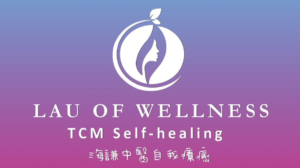Tui Na and deep tissue massage are two popular forms of bodywork that offer different approaches to relieving tension and promoting healing.
If you’re wondering which one is right for you, it’s important to understand the key differences between the two techniques.
Tui Na and deep tissue massage are both effective in addressing muscle tightness, pain, and stress, but they each have unique methods and benefits.
Now let’s break down the differences between Tui Na and deep tissue massage so you can make an informed decision about which type of bodywork is best suited for your specific needs.
What is Tui Na: An Overview of the Ancient Chinese Massage Technique
Tui Na, also known as tuina massage, is a traditional Chinese medicine practice that has been used for thousands of years to promote healing and balance in the body.
The name “Tui Na” translates to “push” and “grasp,” which accurately describes the manipulation techniques used in this type of massage.

Tui Na takes a holistic approach by incorporating principles of Chinese medicine. Practitioners of Tui Na believe that imbalances in the flow of qi (energy) throughout the body can lead to pain, illness, and emotional distress.
By using specific hand techniques to manipulate the body’s soft tissues and energy flow, Tui Na aims to restore balance and promote healing.
Understanding Deep Tissue Massage: How It Differs from Tui Na
Deep tissue massage, on the other hand, is a Western massage technique that focuses on targeting the deeper layers of muscles and connective tissues.
Unlike Tui Na, which incorporates principles of Chinese medicine and energy flow, deep tissue massage primarily aims to release chronic tension patterns in the body.

During a deep tissue massage, the therapist uses firm pressure and slow strokes to reach the underlying muscle layers.
This can help break up adhesions (knots) in the muscles, improve blood flow, and promote healing in areas of chronic pain or injury.
While both Tui Na and deep tissue massage can be effective in relieving muscle tightness and promoting relaxation, they differ in their approach and techniques.
Techniques and Benefits of Tui Na Massage
Tui Na massage uses a variety of techniques to manipulate the body’s soft tissues and energy flow.
Practitioners may use pressing, kneading, rolling, and stretching movements to target specific areas of tension or imbalance.
One common technique in Tui Na is called “rolling,” where the therapist applies pressure along the muscles to release tension and improve circulation.
Another technique is “acupressure,” which involves applying pressure to specific acupoints on the body to promote healing and balance.
Benefits of Tui Na massage include
- Pain relief: Tui Na can help alleviate muscle pain, stiffness, and tension by targeting specific areas of discomfort.
- Improved range of motion: By releasing tight muscles and improving circulation, Tui Na can help increase flexibility and range of motion in the joints.
- Stress relief: The gentle manipulation techniques used in Tui Na can help relax the body and mind, reducing stress and promoting overall well-being.
- Balance and harmony: Tui Na aims to restore balance in the body’s energy flow, promoting overall health and vitality.
Exploring the Techniques and Benefits of Deep Tissue Massage
Deep tissue massage differs from Tui Na in its focus on targeting the deeper layers of muscles and connective tissues.
This technique utilizes firm pressure and slow strokes to reach areas of chronic tension and tightness in the body.
One common technique used in deep tissue massage is called “stripping,” where the therapist applies deep pressure along the muscle fibers to break up adhesions and release knots.
This can help improve blood flow, reduce inflammation, and promote healing in areas of chronic pain or injury.
Another technique often used in deep tissue massage is “friction,” where the therapist applies pressure across the grain of the muscles to release tension and promote relaxation.
This can help increase flexibility, improve range of motion, and reduce muscle stiffness.
Benefits Of Deep Tissue Massage
- Pain relief: Deep tissue massage can help alleviate chronic pain, muscle tension, and tightness by targeting the deeper layers of muscles.
- Improved posture: By releasing tension in the muscles and connective tissues, deep tissue massage can help improve posture and alignment.
- Injury recovery: Deep tissue massage can promote healing in areas of injury or trauma by breaking up scar tissue, reducing inflammation, and improving circulation.
- Stress relief: The firm pressure and slow strokes used in deep tissue massage can help relax the body and mind, reducing stress and promoting relaxation.
Tui Na vs. Deep Tissue: Which Massage Technique is Right for You?
When deciding between Tui Na and deep tissue massage, it’s important to consider your specific needs and preferences.
If you are looking for a more gentle and holistic approach that focuses on restoring balance in the body’s energy flow, Tui Na may be the right choice for you.
This traditional Chinese medicine technique targets specific areas of tension and discomfort using a variety of manipulation techniques.
Tui Na can be effective in relieving muscle pain, improving range of motion, reducing stress, and promoting overall well-being.
On the other hand, if you prefer a deeper pressure massage that targets chronic muscle tightness and knots, deep tissue massage may be more suitable for you.
Combining Tui Na and Deep Tissue Techniques: A Holistic Approach to Massage Therapy
For individuals seeking a more comprehensive and holistic approach to massage therapy, combining Tui Na and deep tissue techniques can offer a well-rounded treatment plan.
Through the combination of deep tissue massage and gentle Tui Na manipulation, therapists may treat both chronic muscular tightness and surface-level stress in a single session.
This hybrid approach allows for a more personalized treatment that targets specific areas of discomfort while promoting overall balance and harmony in the body.
Therapists can build a personalized treatment plan that targets the specific needs of each patient by combining deep tissue massage techniques with Tui Na acupressure sites and forceful pressure.
Benefits of Combining Tui Na and Deep Tissue Techniques
Improved circulation: Deep tissue massage can help break up adhesions and promote blood flow, while Tui Na can help balance the flow of qi in the body.
Enhanced relaxation: The deep pressure of deep tissue massage can release tension in muscles, while Tui Na manipulation can promote relaxation and stress relief.
Increased range of motion: By targeting both superficial and deep layers of muscle tissue, combining these techniques can help improve flexibility and range of motion.
Ultimately, whether you choose Tui Na or deep tissue massage will depend on your individual needs and preferences.
Both techniques offer unique benefits that can help address a variety of physical ailments and promote overall well-being.
Consider consulting with a trained therapist to determine
Lau Of Natural Healing: Explore TCM Wellness Classes for Tui Na Massage & More
If you are interested in exploring the benefits of traditional Chinese medicine, including Tui Na massage, consider starting your journey with Lau Of Natural Healing TCM Wellness Classes.
Lau Of Natural Healing offers a range of classes and workshops that focus on integrating traditional Chinese medicine practices into daily life for improved health and well-being.

Through these classes, you can learn more about the principles of TCM, including the use of Tui Na massage and other techniques to promote balance and harmony in the body.
By participating in Lau Of Natural Healing TCM Wellness Classes, you can gain a deeper understanding of how Tui Na and other traditional Chinese medicine practices can help address physical ailments, reduce stress, and improve overall well-being.
Whether you are new to TCM or looking to expand your knowledge and skills, Lau Of Natural Healing offers a welcoming and supportive environment for individuals of all backgrounds and experience levels.
Get in touch with Lau Of Natural Healing today to learn more about our TCM Wellness Classes and start your journey towards better health and well-being through the practice of Tui Na and other traditional Chinese medicine techniques.
Conclusion
In conclusion, Tui Na and deep tissue massage are both effective techniques for addressing muscle tension, pain relief, stress reduction, and overall well-being.
While Tui Na focuses on restoring balance in the body’s energy flow through gentle manipulation techniques, deep tissue massage targets deeper layers of muscles to release chronic tension and tightness.
For individuals seeking a more comprehensive approach to massage therapy, combining Tui Na and deep tissue techniques can offer a personalized treatment plan that addresses specific areas of discomfort while promoting overall balance and harmony in the body.
This hybrid approach can lead to improved circulation, enhanced relaxation, increased range of motion, and a greater sense of well-being.
Ultimately, whether you choose Tui Na or deep tissue massage will depend on your individual needs and preferences.
Both techniques have their own unique benefits, and combining them can provide a well-rounded approach to addressing physical ailments and promoting overall health.
Consulting with a trained therapist can help determine the best course of action for your specific needs.
Whether you are dealing with chronic muscle pain, sports injuries, or simply looking to relax and de-stress, Tui Na vs. Deep Tissue massage can offer a solution that works for you.
FAQs
Tui Na massage focuses on restoring balance in the body’s energy flow through gentle manipulation techniques, while deep tissue massage targets deeper layers of muscles to release chronic tension and tightness.
Both Tui Na and deep tissue massage can be beneficial for addressing chronic pain. Tui Na may be more suitable for those seeking a gentler approach, while deep tissue massage may be preferred for individuals requiring deeper pressure to alleviate muscle tension.
While both techniques are generally safe when performed by trained therapists, it is important to communicate any medical conditions or concerns with your therapist before beginning a massage session. Some individuals may experience soreness or bruising after deep tissue massage, while others may find Tui Na to be too intense for their liking. It is important to listen to your body and communicate with your therapist to ensure a safe and effective treatment.

















